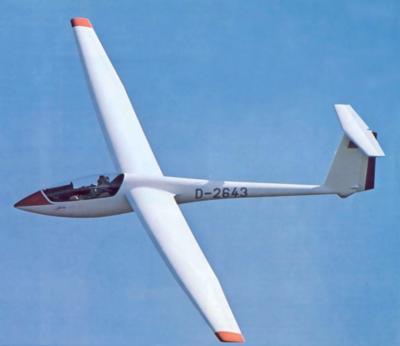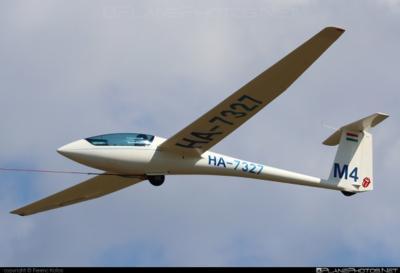Wed, Oct 11, 2023
Devil Complacency
The NTSB has released its final report on a 16 April 2022 accident in which a Schleicher ASW-19B glider was substantially damaged and its Private Pilot rated operator (and sole occupant) was fatally injured shortly after departing Jacksonville, Florida’s Herlong Recreational Airport (HEG).

The accident-aircraft was operated as a personal flight under Part 91 of the Federal Aviation Regulations.
In its report, the NTSB set forth:
“Shortly after the tow airplane and the glider became airborne, the pilot of the glider released from the tow plane about two-hundred-feet above ground level, then entered a left turn back toward the runway, during which the glider impacted terrain. Witnesses to the accident described the glider’s takeoff as “abnormal” and “erratic” and reported that the glider climbed above the tow plane twice before the glider pilot released from tow.
“Post-accident examination of the glider revealed that the elevator control was not connected as required by preflight assembly procedures, which would have resulted in the pilot’s inability to control the glider’s pitch attitude. According to the tow pilot, the glider pilot had assembled the glider by himself—as he had done many times before—on the morning of the accident. It is likely that the pilot, had he completed a positive control check after assembling the aircraft, would have identified the disconnected elevator control.

“Toxicology testing identified two sedating drugs, cetirizine (Zyrtec) and trazodone (an antidepressant), in the pilot’s cavity blood and urine; however, the pilot’s use of these medications most likely did not contribute to the accident.”
The NTSB determined the accident had likely been caused by the pilot’s improper preflight assembly of the glider’s elevator control, which occasioned a loss of pitch control on takeoff. The Board ascribed the accident, also, to the pilot’s failure to complete a preflight positive control check, which would have identified the disconnected elevator control.
More News
Takeoff Roll The process whereby an aircraft is aligned with the runway centerline and the aircraft is moving with the intent to take off. For helicopters, this pertains to the act>[...]
“We’re proud of the hard work that went into receiving this validation, and it will be a welcome relief to our customers in the European Union. We couldn’t be mor>[...]
"Aircraft Spruce is pleased to announce the acquisition of the parts distribution operations of Wag-Aero. Wag-Aero was founded in the 1960’s by Dick and Bobbie Wagner in the >[...]
IDENT Feature The special feature in the Air Traffic Control Radar Beacon System (ATCRBS) equipment. It is used to immediately distinguish one displayed beacon target from other be>[...]
Aero Linx: Pararescue Air Force Pararescuemen, also known as PJs, are the only DoD elite combat forces specifically organized, trained, equipped, and postured to conduct full spect>[...]
 ANN's Daily Aero-Term (05.10.24): Takeoff Roll
ANN's Daily Aero-Term (05.10.24): Takeoff Roll Aero-News: Quote of the Day (05.10.24)
Aero-News: Quote of the Day (05.10.24) Aero-News: Quote of the Day (05.11.24)
Aero-News: Quote of the Day (05.11.24) ANN's Daily Aero-Term (05.11.24): IDENT Feature
ANN's Daily Aero-Term (05.11.24): IDENT Feature ANN's Daily Aero-Linx (05.11.24)
ANN's Daily Aero-Linx (05.11.24)




